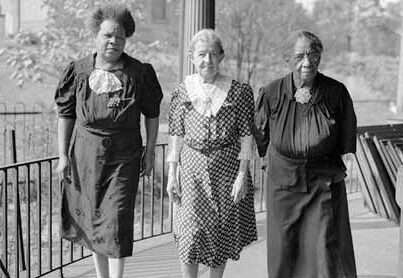
PITTSBURGH, Penn.–Elaine Carrington moved into the Lemington Home for the Aged in Pittsburgh in November 2004. She died three weeks later of a blood clot in her lungs. An investigation by the state found that the staff had failed to give Carrington any of her 10 prescription drugs for 20 days before her death. The Pennsylvania Department of PublicWelfare (DPW) fined Lemington $8,100 and put the home on a three-month probation.
In April 2005, Lemington filed for bankruptcy and in July of that year, shut its doors for good. A subsequent lawsuit watched by nonprofit nursing homes nationwide would finally be settled by a federal appeals court decision in January 2015.
But what happened to Lemington is not uncommon. Researchers at Brown University found that more than 600 other nursing homes in African American, Hispanic and low-income neighborhoods also went bankrupt during this period.
Their study examined the closings of more than 1,700 independent nursing homes between 1999-2009 and found that those located in largely ethinc and low-income communities were more likely to have been closed, mostly because of financial difficulties.
Specifically, nursing homes in the zip codes with the highest percentage of blacks and Latinos were more than one-third more likely to be closed, and the risk of closure in zip codes with the highest level of poverty was more than double that of those in zip codes with the lowest poverty rate.
The Impoverished History of Race And Nursing Home
After exposés in the 1920s revealed the horrific conditins in existing “workhouses” for the impoverished older Americans and others, President Franklin D. Roosevelt’s New Deal reformers hoped to create alternatives to those state-run institutions.
The New Dealers drafted legislation requiring a states to provide “a reasonable subsistence compatible with decency and health.” The bill placed overall administrative authority with the federal government, including the authority to set eligibility requirements.
However, Southern congressmen, led by the late segregationist, Sen. Harry F. Byrd Sr., D-Va., fought to strike those provisions from the bill. The final law allowed states to retain administrative control and set both eligibility rules and benefit amounts.
Jill Quadango of Florida State University has written that Byrd and his allies “feared that federal benefits would undermine planters’ paternalistic control over tenant labor, particularly black labor . . . [and they] had no intention of letting federal funds go directly to black workers, because such payments could undermine southern industrial wage scales which were significantly lower than those in the North.”
As with other New Deal legislation, President Roosevelt had to accede to the states’ rights demands of the southern lawmakers, who controlled the key congressional committees. He feared he could not get the 1935 Social Security Act passed without their votes.
In 1950, the Social Security Board proposed that Congress should authorize “vendor payments” for medical assistance to aged, blind and disabled welfare recipients. The plan called for federal matching grants to the states and left untouched a state’s control of eligibility and benefits.
The federal appropriation for vendor payments program grew from about $85 million to more than $500 million by 1960, when Congress expanded the program with passage of the Kerr-MillsAct to cover low-income people who were “medically indigent.” That included those not on welfare, but who would be impoverished if suddenly faced with large medical expenses.
In 1965, the American Medical Association (AMA) proposed expanding Kerr-Mills as an alternative to Medicare--the new program designed to cover everyone age 65 or older regardless of income, and which the association had fought against for years.
That strategy failed, however. Medicare was approved and the AMA proposal became Medicaid.
Today Medicaid is a federal-state program that pays the healthcare costs for low-income people, including “indefinite stays” in nursing homes, at rates that vary by state, but are always considerably less than Medicare’s rate or the fees charged to people who pay for their own care.
--Wallace Roberts
Medicaid Homes Can’t Compete
The principal authors of the study, Vincent Mor and Zhanlian Feng, both of Brown at the time (Feng is now at the Research Triangle Institute), noted “closures were more likely to occur among facilities in states providing lower Medicaid nursing home reimbursement rates.” That left these homes without the resources they needed to compete successfully in an industry experiencing an oversupply of beds and intensified competition.
One could argue that the blood clot was not the fundamental cause of Carrington’s death and that the incidents that led to Lemington’s bankruptcy were inevitable outcomes of Medicaid policies rooted in racism.
Legislation passed 80 years ago as part of President Franklin D. Roosevelt’s Social Security Act gave frail and impoverished elders welfare payments which could be used to pay for room and board in private “community care homes,” but not in the older punitive public workhouses that English settlers brought to America. Those government-run institutions forced applicants to submit to a means test to prove they were poor. This was the beginning of the U.S. nursing home industry.
Under FDR’s original Social Security bill, the federal government would have had the authority to set eligibility rules and benefit amounts. However, Southern members of Congress, whose votes Roosevelt needed to pass Social Secuity, insisted that decisions on eligibility and benefits levels remain in state hands.
Although Medicare covers most hospital, doctor and prescription drug services, it pays only up to 100 days of nursing home care when medically necessary, after a patient is discharged from a hospital. Medicaid’s nursing home payments are deliberately set at levels that usually do not cover costs. That’s because officials assume the higher Medicare and private pay rates will subsidize the costs of the Medicaid patients.
While Medicaid reimbursement rates vary by state, they are always below Medicare’s reimbursement levels or the fees charged to people who pay for their own care.
The demise of Lemington and other nursing homes in minority and low-income neighborhoods is a direct result of this flawed payment scheme. However, large for-profit nursing home chains, some of which are owned by private equity companies and real estate investment trusts, can maximize profits by using expensive and aggressive marketing practices to cherry pick the wealthier residents in a given area while reducing the number of their own Medicaid clients.
Medicaid’s payment structure also has impacted the quality of care in nursing homes with predominantly minority residents.
Research by Brown University’s Vincent Mor and others found that the “nearly 15 percent of U.S. nonhospital-based nursing homes that serve predominantly Medicaid residents have fewer nurses, lower occupancy rates and more health-related deficiencies. They are more likely to be terminated from the Medicare/Medicaid program, are disproportionately located in the poorest counties and are more likely to serve African-American residents than other facilities.”
Jim Crow Lives
Medicaid’s grants-in-aid structure, in which each state decides who is eligible for nursing home care and the rates at which nursing homes are reimbursed, is often used to exclude people of color and those considered undeserving poor. In most of the South and some northern states, eligibility requirements are harsher and benefits and nursing home reimbursement levels are lower.
On the whole, Medicaid programs in the 17 states that had Jim Crow laws on the books before the 1954 Brown v. Board of Education decision outlawing segregation in public schools, provide lower-quality health care with more limited scopes of services to fewer eligible groups at lower reimbursement rates than do most other states.
While some of that disparity in the application of Medicaid is the result of a lower rate of industrialization and union membership in the South and border states, much of it has its origins in the 1935 changes Sen. Byrd instisted on in the Social Security bill.
Further evidence linking Medicaid to the racism and class bias of Byrd’s original policy change is provided by the current refusal of almost every former Jim Crow state to expand Medicaid under the Affordable Care Act (ACA). That has happened even though the federal government is covering 100 percent of the additional costs, phasing down to 90 percent by 2020.
The conservative reaction against federal control of Medicaid is continuing under those and other states, mainly ones with Republican governors. The White House is allowing some to expand their Medicaid programs under ACA, which those governors will only do if they can impose eligibility limits and cost-sharing for the poor–barrier to care that the law was supposed to eliminate.
If Medicaid policies combined with poor judgment and incompetence by the home’s administrators led directly to the the Lemington Home’s bankruptcy, would it have been able to gradually get out of debt and survive under good leadership?
Based on the evidence that 613 other nursing homes in African American, Hispanic and low-income communities went bankrupt during the same time span as Lemington did, the answer would appear to be “No.”
A major reason that Medicaid is underfunded is that it is not a health program. It’s a welfare program, and Americans don’t like to spend tax dollars on the poor.
Elaine Carrington died before her time because she was under the care of workers overburdened and underpaid by an employer sliding toward bankruptcy due to a public policy that shortchanges medical care for the poor. Deaths like hers can be prevented.
Part 2 of this series will look closely at why Pittsburgh’s Lemington Home for the Aged went bankrupt. Wallace Roberts is an independent journalist, who wrote this article for the NAACP magazine, The Crisis, with support from the Fund for Investigative Journalism, the George Polk Investigative Grant program, the Journalists in Aging Fellows program of New America Media and the Gerontological Society of America, Investigative Journalists and Editors, and the Alicia Patterson Foundation. These pieces were published by New America Media.
© 2014 Wallace Roberts


